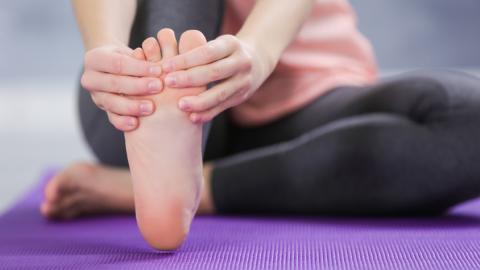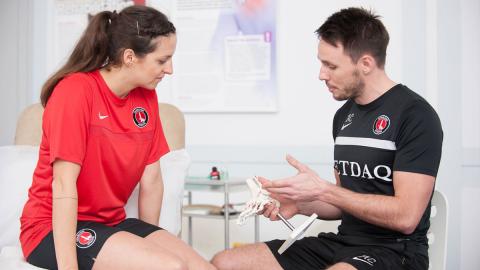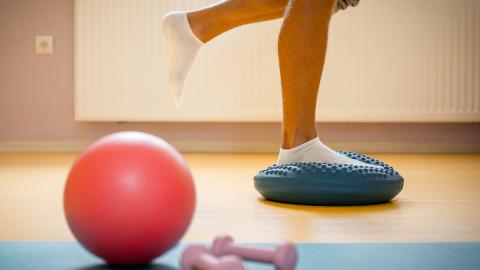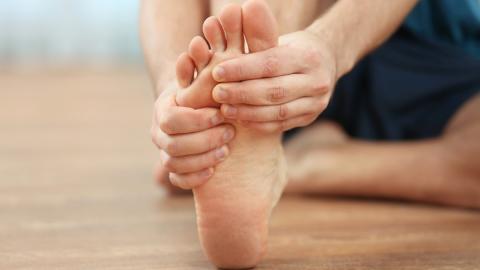What can cause foot pain?
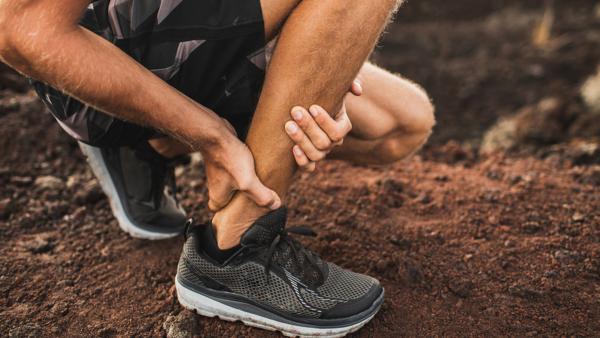
Each foot is made up of 26 bones and over 33 small joints, which work with ligaments, muscles and tendons. These joins create a structure that can be both stable, yet also flexible and adaptive to its environment.
As we age, the structure of the foot changes, especially in the arch of their foot. Arthritis may also affect joints of the foot.
The structure of the foot
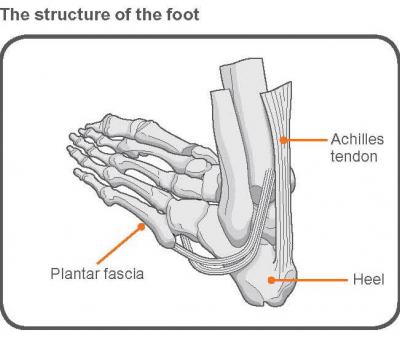
Common causes of foot pain
Due to its complexity, there are many causes of foot pain. Some of the common ones are:
- Poor fitting or unsupportive footwear
- Change in activity (e.g. a change of job or training schedule)
- Being overweight
- Natural ageing
- Trauma (impact e.g. a heavy object falling onto your foot)
- Conditions e.g. Arthritis (which may affect you, as well as the way your feet work).
It is important to understand that no two feet are the same, so each person’s condition may present differently. Sometimes pain or different sensations like numbness or tingling in the feet may actually be referred from other parts of the body. This is sometimes called referred pain.
Causes of heel pain
There are many causes of heel pain. One of the most common causes is a condition called plantar fasciitis, but other factors can cause heel pain such as:
- poor or incorrect footwear,
- being overweight,
- irritation of the nerves of the heel,
- thinning of the heel fat pad,
- arthritis of the subtalar joint,
- or a fracture of the heel bone (calcaneum)
What is plantar fasciitis?
The plantar fascia is a strong ligament that runs from the front of the heel bone (calcaneum) to the toes, which in some people becomes sore and inflamed. This can occur if the plantar fascia is under constant load.
Common causes are long periods of standing (especially in unsupportive footwear), being overweight, tightness of the calf, having either a high or low arch, or sometimes after an injury to the heel. A common time of year for this to begin is the summer, when people walk bare foot or in unsupportive sandals and flip-flops.
A lot of people may mention heel spurs as being a cause of pain. These are often seen in people with plantar fasciitis, but are not considered the cause of the pain.
Achilles Tendonosis
The Achilles tendon is the thick cord like structure that can be felt at the back of the ankle. It is a very strong tendon which attaches the calf muscles (gastrocnemius and soleus) to the heel bone (calcaneus), ,and works when the heel raises (on tip toe) such as when walking or running.
Most injuries to the Achilles tendon are over-load issues that are often caused by over-use. For example, increasing training schedules too quickly, or taking up a new activity you are not used to.
Poor fitting or unsupportive footwear alongside natural factors such as the shape of your foot may put you at higher risk of Achilles tendon overload.
Achilles tendonitis is an old term which described this condition as inflammation. We now know this isn’t always the case and commonly pain is caused by a tight (and/or weak) calf muscles, the ageing process (as we age the tendon becomes less flexible and less able to absorb shock), as well as injury or trauma.
Ankle Sprains
Ankle sprains occur when you roll, twist or turn your ankle in a forceful way. This can result in injury to the ligaments that support your ankle joint. Most sprains happen when you twist your foot inwards, resulting in pain to the outside (lateral) ligaments.
Depending on how badly you sprain the ligaments, signs and symptoms can be:
- Pain on the outside of your ankle when weight-bearing, and/or touching the area.
- Swelling, and sometimes some bruising
- Pain on, or limited movement of, the ankle
Many ankle sprains do not require professional intervention, but if the bone is very tender, or you are unable to take any weight on the ankle after injury, it is sensible to get it checked by a professional to rule out a fracture.




































